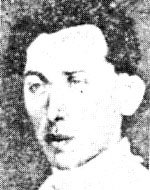Kotzer, Abraham
Son of Yehuda Leib. He was born in 1905 in Dvinsk, Latvia. He grew up in a traditional environment and studied until the age of 17 at a yeshiva and Russian high school. In 1918 he was orphaned and he had to take care of his younger brothers and sisters. To this end he stopped his studies and specialized in tailoring. The little family moved to Riga, where Abraham gave his brother to the community and joined the army. A few months later, at the height of the First World War, he was captured by the Germans. At the end of the war, when he learned about the existence of the Zionist pioneering movement, he entered the ranks of the He – Chaluts movement where he was active in the Gordonia youth movement. For three years Avraham was in training in an agricultural farm. He was known for his dedication, diligence and modesty. He had an evening voice and was a member of the local Zionist choir. After the 1929 riots, he fulfilled his yearning to immigrate to Eretz Israel, lived in Hadera for a year and a half, and then with his group members to re-establish Hulda, which was abandoned during the 1929 riots. For ten years he worked modestly and devotedly, worked day and night. In 1936, he enlisted in the Guard Corps and worked in securing the workers on their way to work and returning home. On 25 Tishrei, October 20, 1938, when the workers were driving in a truck to their home, they entered the wadi near Hulda Esh and into an ambush. After a gunfight, three guards, Avraham among them, were killed. Before he fell he managed to tell his friend: “Take the gun, I’m dead.” He was laid to rest in the cemetery in Hulda. A monument was erected on the grave of the three Notrim who fell in the battle. A tower is engraved with the words “Heroes of Battle and Mines.” The bridge crossing the wadi, where the three fell, is called Gesher Hashlosha.
